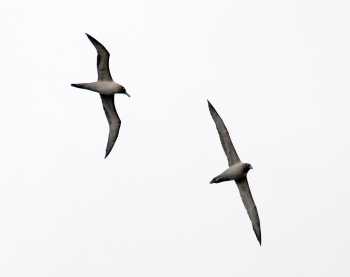The Antarctic Treaty and related agreements, collectively called the Antarctic Treaty System, regulate international regulations with respect to the Antarctic Continent. For the purposes of the treaty system, Antarctica is defined as all of the land and ice shelves south of 60°S. The treaty entered into force in 1961 and currently has 50 signatory nations.
The Protocol on Environmental Protection to the Antarctic Treaty was signed in Madrid, Spain in October 1991 and entered into force in 1998. It designates Antarctica as a "natural reserve, devoted to peace and science". The Protocol has six Annexes. Annex II on Conservation of Fauna and Flora also entered into force in 1998.
Any species of native mammals, birds and plants listed in Appendix A of Annex II shall be designated a "Specially Protected Species", and shall be accorded special protection by the Parties. Permits shall not be issued to take a Specially Protected Species unless the taking is for a compelling scientific purpose, will not jeopardize the survival or recovery of that species or local population and uses non-lethal techniques where appropriate (click here).
Currently no procellariiform seabird is listed as a Specially Protected Species by the ATS. Two workshops have been held in the past under the auspices of the Scientific Committee on Antarctic Research (SCAR) to determine whether the ACAP-listed Southern Giant Petrel Macronectes giganteus should be included within Annex II but following the findings of the second workshop the XXXI Antarctic Treaty Consultative Meeting that met in 2008 decided against such a listing.
Seven other procellariiform seabird species breed within Antarctica: Light-mantled Sooty Albatross Phoebetria palpebrata (click here), Pintado or Cape Petrel Daption capense, Snow Petrel Pagodroma nivea, Antarctic Petrel Thalassoica antarctica, Antarctic or Southern Fulmar Fulmarus glacialoides, Wilson's Storm Petrel Oceanites oceanicus and Black-bellied Storm Petrel Fregetta tropica.
Of the eight Antarctic-breeding species, none is considered to be threatened, having a category of Least Concern except for the ACAP-listed and Near Threatened Light-mantled Sooty Albatross.

Light-mantled Sooty Albatrosses fly within the Antarctic Treaty region
Photograph by John Chardine
Many localities where Southern Giant Petrels breed within the Antarctic Treaty region have either (or both) been identified as Important Bird Areas by BirdLife International or afforded extra protection as either ASPAs (Antarctic Specially Protected Areas) or ASMAs (Antarctic Specially Managed Areas) with attendant management plans in terms of the Antarctic Treaty (click here).
Further Antarctic localities visited by tourists and which support Southern Giant Petrel colonies have Visitor Site Guides produced by the Antarctic Treaty Secretariat (click here).
Reference:
Shirihai, H. 2007. A Complete guide to Antarctic Wildlife. The Birds and Mammals of the Antarctic Continent and the Southern Ocean. Second Edition. London: A&C Black. 544 pp.
John Cooper, ACAP Information Officer, 10 January 2013

 English
English  Français
Français  Español
Español